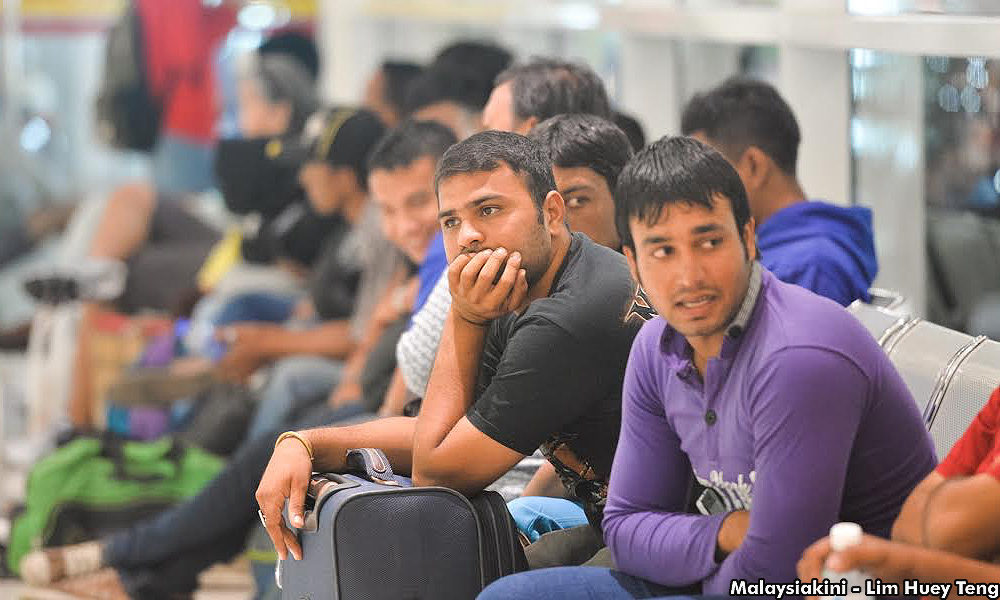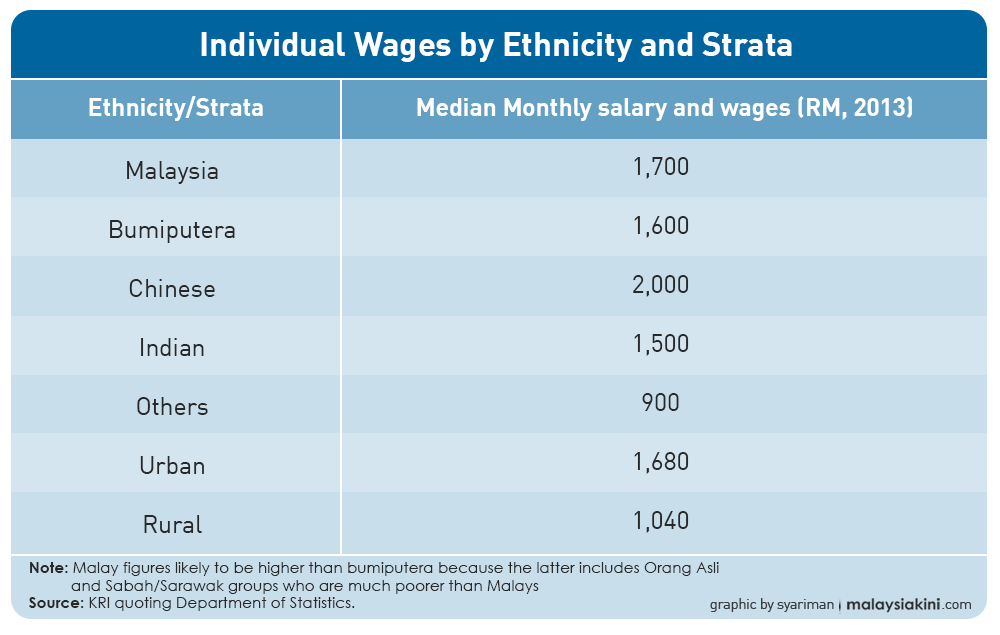
A QUESTION OF BUSINESS | At least two ways - both very wrong in the longer term - were used to support the export sector in Malaysia in believing that growth through exports was the right thing for a developing country like Malaysia.
But even though there was economic growth, which means more wealth was created, there was impoverishment too. But how could that be? Basically, those who were rich got richer and those who were poor got poorer.
How did the government achieve export competitiveness over the years? Through two measures. First, they reduced the number of things Malaysians generally could buy by going for a policy which weakened the ringgit. And two, they imported poverty by allowing the uncontrolled import of cheap labour.
Both improved Malaysia’s competitiveness not by raising productivity, although there was some of that, but by cutting down the cost of labour through the import of cheap labour (imported poverty) and lowering the relative value of the currency or currency depreciation, effectively lowering costs in US dollars.
Let’s look at these measures in turn.
1. Currency depreciation
The ringgit fell in value from around as strong as around RM2.2 to the US dollar in 1980 to around RM4.0 now. The US dollar appreciated by over 80% during the period and the ringgit lost over four-tenths of its value relative to the US dollar.
Consider what that does: if an imported food item cost US$1, it was RM2.2 in 1980. But it rises to RM4 now, an increase of some 82%. But consider it now from the exporter’s perspective: If he sells something for US$1 overseas now, he gets RM4 versus RM2.2 then, again 82% more.
Unless he shares this benefit equally with the worker - and in practice, he does not - a depreciated currency is a subsidy to exporters and a tax on workers because everyone depends on imported goods and even services for a good part of what they consume. Think in terms of food, clothing and buying from foreign chains.
While a depreciated currency improves the appearance of export figures in ringgit terms, it is still not a long-term solution for the betterment of people because it directly impoverishes a major part of the public by reducing their purchasing power - the amount they can buy with the ringgit.
2. Importing poverty through cheap foreign labour
The next major stupid move successive governments did was to import cheap labour from overseas. Until today, this is largely from Indonesia, Philippines, Bangladesh and India.
In the 1980s, this happened in the plantations affecting mainly Indian Malaysians who were displaced from the estates due to cheap Indonesian legal and illegal labour. Soon, this imported cheap labour spread into all areas, heavily depressing labour wages, affecting all Malaysian labour including Malays.
Was wealth ever created?
How terribly short-sighted! While developed countries were importing skilled and white-collar workers from developing countries, Malaysia, still very much a developing country then (and still is despite what others say), was importing cheap labour from other countries, depressing wages of a large section - probably as much as 50% - of its own workforce.
What kind of a madness was this that at the same time inhibited improved productivity by opening the tap to cheap labour and delayed the invention and adoption of new processes to reduce labour input while improving productivity per person through training and automation?
Till this day, when employers complain of labour shortage, it irritates one to see imported labour at car parks, for instance, being used to hand out parking tickets even after the process has been automated at the entry points.
Drive further in and you see others directing traffic and blowing loudly on whistles. The price of labour is so cheap that imported labour is used for such menial tasks. Are Malaysians so illiterate that they can’t read and follow signs?
As if the whole situation is not ridiculous enough, government officials and ministers regularly regurgitate garbage by saying that labour imports are necessary because Malaysians do not want to do these jobs. Pay them enough and Malaysians will do the job. Perhaps the ministers should send their daughters and sons to do this kind of work for a pittance.
And as many millions of workers are imported, a thriving business sanctioned by the government sprouts up living off the blood and sweat of workers and exploiting employers by making both parties pay ridiculous amounts for legal import, driving them towards employing illegal workers.
One may ask, what then is the alternative? If you want a broad section of the public to get richer and more affluent, the only way is to create wealth for everyone.
That means improving the overall productivity or output per person so that he or she deserves a higher wage. Not by creating wealth for some and impoverishing most via currency depreciation and depressing wages.
Ah, yes but how do you do that? There is only the hard way. First, improve the quality of education for all and focus on the right kind of education which will make people employable.
Next promote the kind of industries which will increase the dollar value of output per person and ensure that productivity gains drive wealth creation, not cost-cutting.
Third, ensure that as much as possible of the resources go towards improving educational opportunities and building the necessary infrastructure for continuing productivity improvements with as little leakage as possible.
How much of this has been done since independence? Little.
The frightening part
According to Khazanah Research Institute’s (KRI) ‘State of Household Report’ dated November 2014 and Employees Provident Fund (EPF) data on individual incomes which includes salary or wages, overtime payments and bonus in 2013:
- 96 percent of active EPF members earned less than RM6,000 a month
- 85 percent less than RM4,000
- 62 percent less than RM2,000
That’s a telling figure - 62 percent of workers earn less than RM2,000 a month. How can many of them live comfortably with such an income, especially when they have children to support?
Meantime, the median monthly salaries and wages per month for individuals was RM1,700 in 2013 (see chart below). That means half of all workers get this much or less, KRI explains.
And what does an illegal Indonesian worker earn in a month these days? In March, there are 27 working days including Saturdays on which they typically work as well. Industry employers say Indonesian illegal workers cost RM70 a day, casual, that means not contracted. Multiply that figure by 27, we get RM1,890 for the month of March.
Now, the frightening part is that this is more than the RM1,700 median salary for Malaysia which means that 50% of Malaysians earn less than casual Indonesian workers!

Clearly, the majority of the country lives in poverty. Income gains for the wage-earner have not gone up enough. And for a country like Malaysia with abundant resources and which once had the highest income in Asia after Japan, that reflects a failure of government.
If one needs an example of successful economic development, you just need to look across the Causeway which started pretty much from where Malaysia did and look where it is now with the adoption of the right policy mix coupled with an incorruptible government.
The currency is now valued at three times Malaysia’s against about parity in 1980 and its per capita income is among the highest in the world.
We are not saying that Singapore is the perfect state but in terms of economic development, they have beaten us by far and continue to do so.
P GUNASEGARAM still hopes that sometime in the future (perhaps soon?) there will be a government not only of the people but for the people. E-mail him at t.p.guna@gmail.com -Mkini



No comments:
Post a Comment
Note: Only a member of this blog may post a comment.